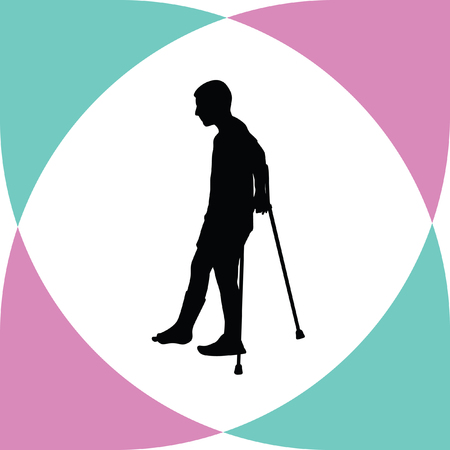Introduction: Understanding Electrical Stimulation Therapy
Electrical stimulation therapy, often called “e-stim” or “electrotherapy,” is a treatment that uses mild electrical currents to help with healing, pain relief, and muscle function. In American healthcare, you might see this therapy used in physical therapy clinics, hospitals, and sometimes even at home under professional guidance. But what exactly is it, and why do doctors recommend it?
What Is Electrical Stimulation Therapy?
Electrical stimulation therapy involves placing small pads or electrodes on your skin. These electrodes send safe, controlled electrical impulses into the body. The goal is to stimulate nerves or muscles, helping with issues like pain management, muscle weakness, or poor circulation.
Common Types of Electrical Stimulation Used in Rehab
| Type | Main Purpose | Common Uses |
|---|---|---|
| TENS (Transcutaneous Electrical Nerve Stimulation) | Pain relief | Back pain, arthritis, nerve pain |
| NMES (Neuromuscular Electrical Stimulation) | Muscle strengthening | Stroke rehab, post-surgery recovery, muscle atrophy prevention |
| IFC (Interferential Current) | Pain reduction and inflammation control | Sports injuries, chronic pain syndromes |
| EMS (Electrical Muscle Stimulation) | Muscle re-education and activation | Knee injuries, after casting or immobilization |
How Is Electrical Stimulation Therapy Used in American Healthcare?
In the United States, e-stim therapy is a common part of rehabilitation programs for people recovering from injuries, surgeries, strokes, or dealing with chronic pain. Physical therapists often combine e-stim with exercise and other treatments to help patients get stronger and feel better faster. Many insurance plans cover electrotherapy when prescribed by a healthcare provider and used as part of a larger treatment plan.
Key Benefits of E-Stim in Rehab Settings:
- Pain Control: Helps reduce both short-term and chronic pain without medication.
- Muscle Recovery: Assists in regaining strength after injury or surgery.
- Nerve Stimulation: Supports movement and sensation for people with nerve damage.
- Improved Blood Flow: Encourages healing by boosting circulation in targeted areas.
E-stim therapy has an important place in American rehabilitation medicine. However, there are still many misunderstandings about how it works and who can benefit from it—topics we’ll explore further in this series.
2. Common Myths About Electrical Stimulation in the U.S.
Understanding the Misconceptions
Electrical stimulation therapy, often called “e-stim,” is a common tool used by physical therapists and rehabilitation experts in the United States. However, many American patients hold misunderstandings about this treatment. These misconceptions can lead to unnecessary worry or even refusal of a potentially helpful therapy. Let’s take a closer look at some of the most widespread myths.
Popular Myths Among American Patients
| Myth | What People Believe | The Reality |
|---|---|---|
| E-stim is unsafe | People worry it could cause burns, shocks, or other injuries | E-stim is FDA-regulated and generally very safe when used by trained professionals |
| E-stim is painful | Some think it feels like getting shocked or zapped strongly | The sensation is usually mild tingling or pulsing and should not be painful; intensity is always adjustable |
| Only for athletes or severe injuries | Many assume electrical stimulation is just for sports injuries or elite athletes | E-stim is used for a wide range of people, including those with chronic pain, post-surgical needs, and everyday injuries—not just athletes! |
| Addictive or habit-forming | A few believe frequent use can make your body dependent on e-stim | E-stim does not cause addiction; it’s simply a tool to help your muscles and nerves recover |
| Replaces exercise completely | Some think you can skip physical activity if you use e-stim regularly | E-stim works best when combined with traditional exercises and rehab activities—it doesn’t replace movement! |
Why Do These Myths Exist?
Misinformation often spreads through social media, word-of-mouth, or outdated ideas about medical devices. In American pop culture, electrical treatments are sometimes shown as dramatic or even dangerous, adding to confusion. Additionally, many patients only learn about e-stim after an injury, so their first impression may come from friends or family who had different experiences.
Talking With Your Therapist Helps
If you’re unsure about electrical stimulation therapy, talk openly with your healthcare provider. American physical therapists are trained to explain procedures in plain language and tailor treatments to your comfort level. Asking questions can clear up myths and help you feel more confident about your care.

3. Debunking Misunderstandings: Safety and Efficacy
Clarifying the Proven Benefits of Electrical Stimulation Therapy
Many Americans may have heard mixed messages about electrical stimulation therapy, sometimes known as e-stim. Its easy to see why confusion exists, but lets break down what research and clinical experience actually show. Electrical stimulation is widely used by physical therapists and other healthcare professionals to help with pain management, muscle strengthening, improved blood circulation, and even recovery after injury or surgery.
Common Benefits Backed by Science
| Benefit | What It Means for You |
|---|---|
| Pain Relief | Reduces both acute and chronic pain without medication |
| Muscle Strengthening | Helps rebuild muscles after injury or surgery |
| Improved Circulation | Aids healing by increasing blood flow to targeted areas |
| Nerve Stimulation | Can help re-educate nerves after certain injuries (like stroke) |
Safety Regulations in the United States
The safety of electrical stimulation therapy is a top priority for healthcare providers in the U.S. Devices are designed with built-in safety features, and treatment is typically supervised by licensed professionals who are trained to use these tools correctly. If you’re getting therapy in a clinic, you can rest assured that your therapist follows strict safety guidelines to protect your health.
FDA Guidelines: What You Should Know
The U.S. Food and Drug Administration (FDA) plays a key role in making sure electrical stimulation devices used for therapy are safe and effective. Here’s how the FDA helps:
| FDA Responsibility | Impact on Patients |
|---|---|
| Device Approval Process | Only devices that meet rigorous safety standards can be marketed and used in clinics. |
| Ongoing Monitoring | The FDA keeps track of device performance and issues recalls if safety concerns arise. |
| User Instructions & Labeling | Devices come with clear instructions to ensure proper use at home or under professional care. |
| Reporting Adverse Events | If any problems occur, they are investigated quickly to protect future patients. |
Your Takeaway: Understanding E-Stim Therapy in America
If you or someone you know is considering electrical stimulation therapy, knowing that its backed by science, regulated for safety, and closely monitored by authorities like the FDA can offer peace of mind. When administered by professionals following American guidelines, e-stim is not only effective but also very safe for most people.
4. Cultural Influences on Perceptions of Therapy
The Role of American Media in Shaping Opinions
In the United States, media plays a huge part in how people think about health treatments, including electrical stimulation therapy (also known as electrotherapy). Movies and TV shows sometimes show electrotherapy in a negative light, confusing it with old-fashioned shock therapy or using it as a dramatic tool in horror scenes. This can make many Americans feel uneasy about trying this modern and safe therapy.
Common Portrayals in Media vs. Reality
| Media Portrayal | Actual Practice |
|---|---|
| Electrotherapy as painful or dangerous | Modern therapy is gentle and closely monitored by professionals |
| Used only for severe mental illness | Mainly used for pain relief, muscle rehab, and injury recovery |
| Dramatic, high-voltage shocks shown visually | Mild electrical currents are used; most patients feel only tingling |
Influence of Social Networks and Online Communities
Many Americans turn to social media and online forums for health advice. Stories shared by friends, family, or influencers can quickly spread both accurate information and misunderstandings about electrotherapy. For example, one viral post claiming that electrical stimulation “cures everything” or “does nothing” can shape thousands of opinions overnight. These networks often reinforce myths because people trust personal stories more than official sources.
Cultural Attitudes Toward Technology and Medicine
The American public generally embraces new technology but also values personal choice and independence in healthcare decisions. Some people are excited about modern therapies like electrotherapy, while others are cautious due to past experiences or cultural beliefs that favor natural remedies over anything involving machines or electricity.
Factors Affecting Perception of Electrotherapy in America:
| Factor | Description | Impact on Public Opinion |
|---|---|---|
| Media Representation | TV, movies, news reports | Can create fear or misunderstanding if inaccurate |
| Peer Influence | Advice from friends/family/online groups | Shapes beliefs through shared stories (positive or negative) |
| Cultural Beliefs | Attitudes toward science, medicine, and technology | Affects willingness to try new therapies like electrotherapy |
| Misinformation Online | Unverified health claims on social media/blogs/forums | Spreads quickly and is hard to correct once accepted by many people |
Understanding these cultural influences is important for healthcare providers who want to help their patients get the facts about electrical stimulation therapy and make informed choices based on real evidence rather than myths.
5. Promoting Accurate Information and Patient Empowerment
Empowering Patients Through Education
One of the most effective ways to address myths and misconceptions about electrical stimulation therapy is by providing clear, accessible information to patients. American healthcare professionals can use easy-to-understand language, relatable examples, and visual aids to explain how electrical stimulation works, its benefits, and its safety. By offering educational materials such as brochures, infographics, or short videos, clinics can reach a wider audience and help patients feel more confident in their treatment choices.
Strategies for Addressing Patient Concerns
Patients often have concerns about the safety, effectiveness, or sensation of electrical stimulation therapy. Healthcare providers should encourage open communication, inviting questions during appointments and offering honest answers. It’s helpful to acknowledge common fears—such as the belief that electrical stimulation is painful or only for athletes—and counter them with facts.
| Common Concern | Fact-Based Response |
|---|---|
| “Will it hurt?” | The sensation is usually mild tingling; treatments are adjusted for comfort. |
| “Is it only for athletes?” | No, electrical stimulation can help people of all ages and backgrounds with various conditions. |
| “Is it dangerous?” | When used under professional supervision, its very safe with minimal side effects. |
Encouraging Informed Decision-Making
In the United States, patient autonomy is highly valued. Healthcare professionals should support patients in making informed decisions by discussing the risks, benefits, and alternatives to electrical stimulation therapy. Providing resources from trusted organizations like the American Physical Therapy Association (APTA) or Mayo Clinic can help patients research further at their own pace. Allowing time for questions and offering follow-up opportunities ensures patients feel empowered rather than pressured.
Tips for Healthcare Professionals
- Use plain English and avoid medical jargon when explaining treatments.
- Share real-life success stories from other American patients (with permission).
- Offer written summaries after appointments so patients can review key points at home.
- Direct patients to reputable websites or community workshops for further learning.
Building Trust in the Community
By consistently sharing accurate information and treating each concern respectfully, healthcare providers can build trust with their communities. This approach not only helps correct misinformation but also encourages more people to consider therapies that could improve their quality of life.


